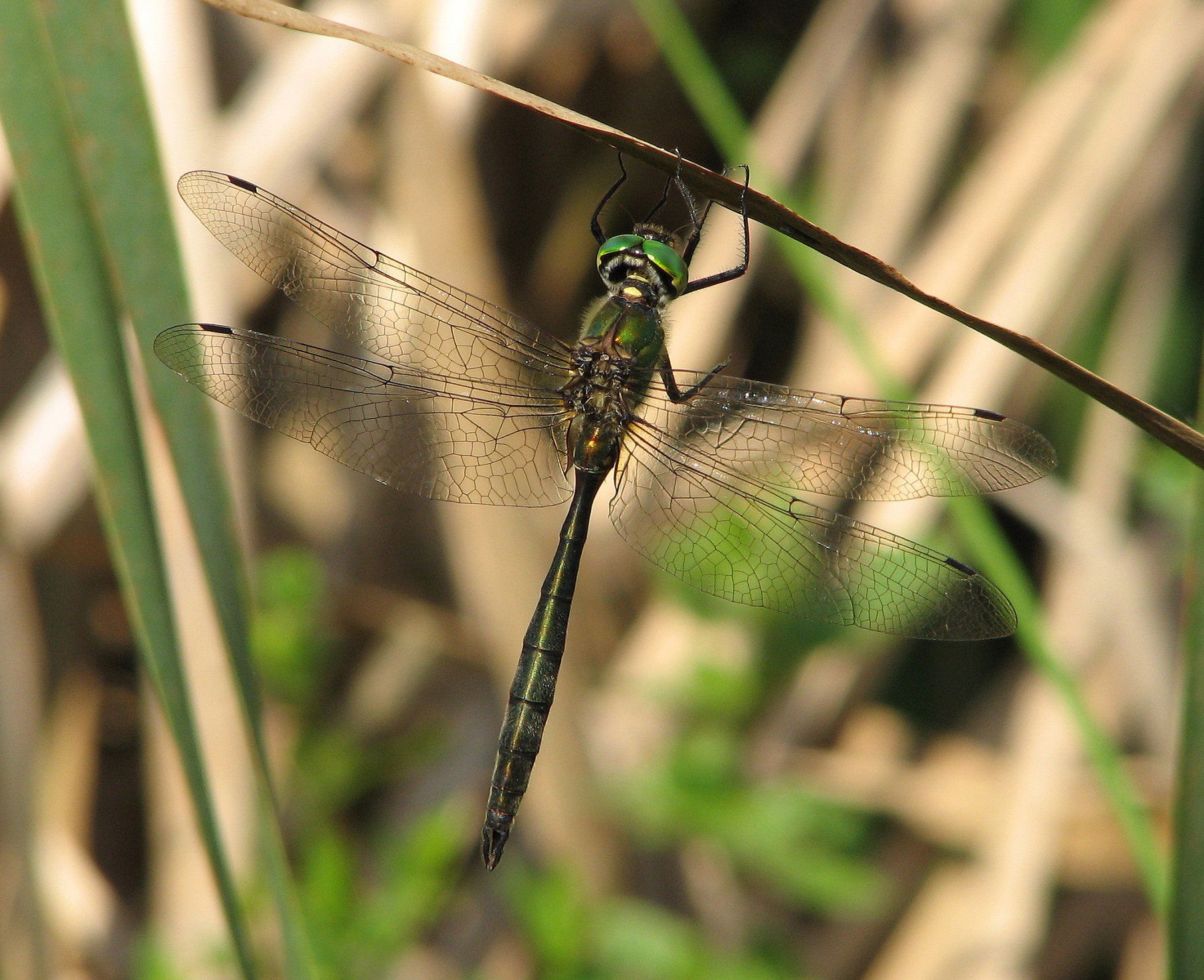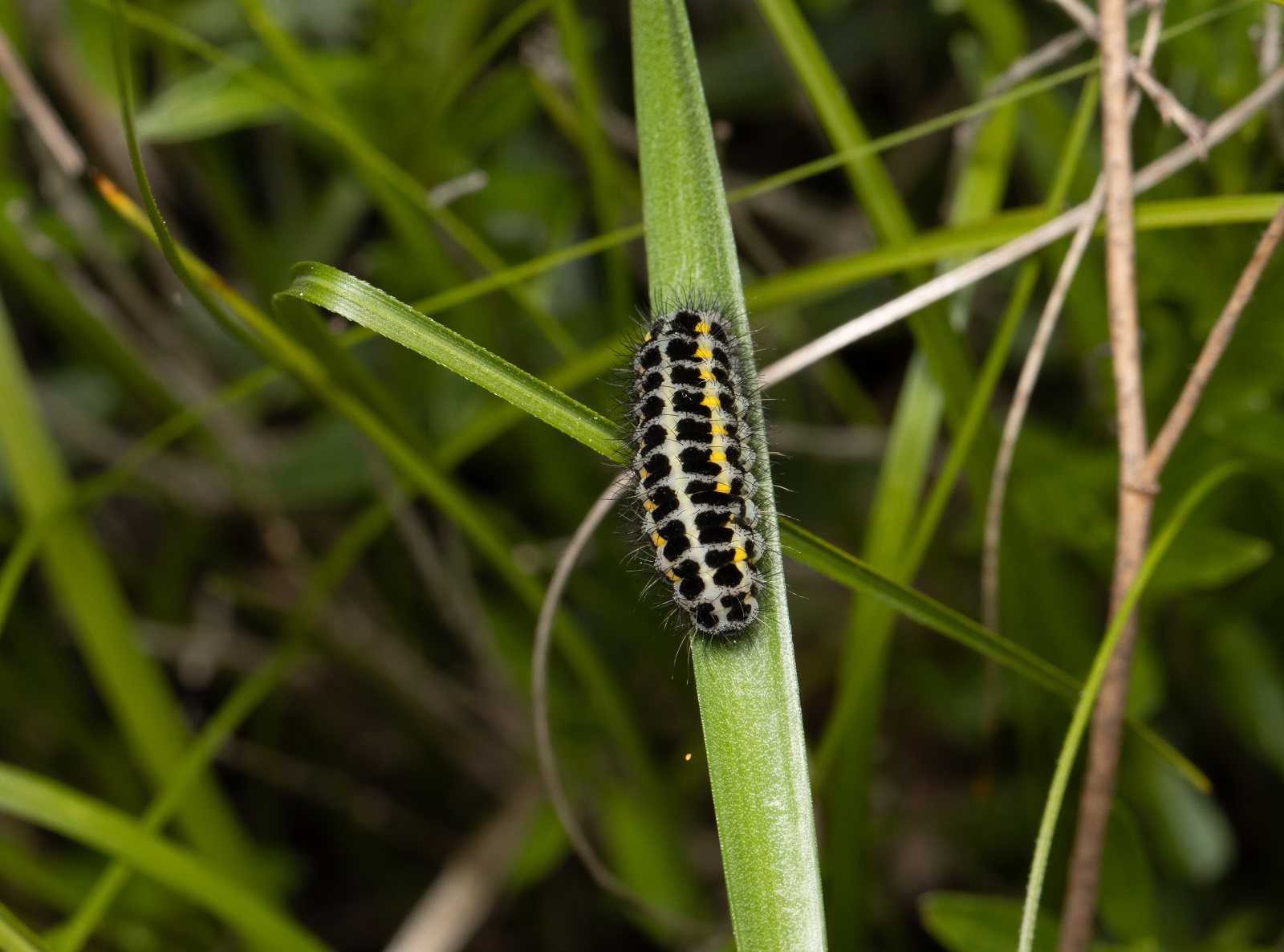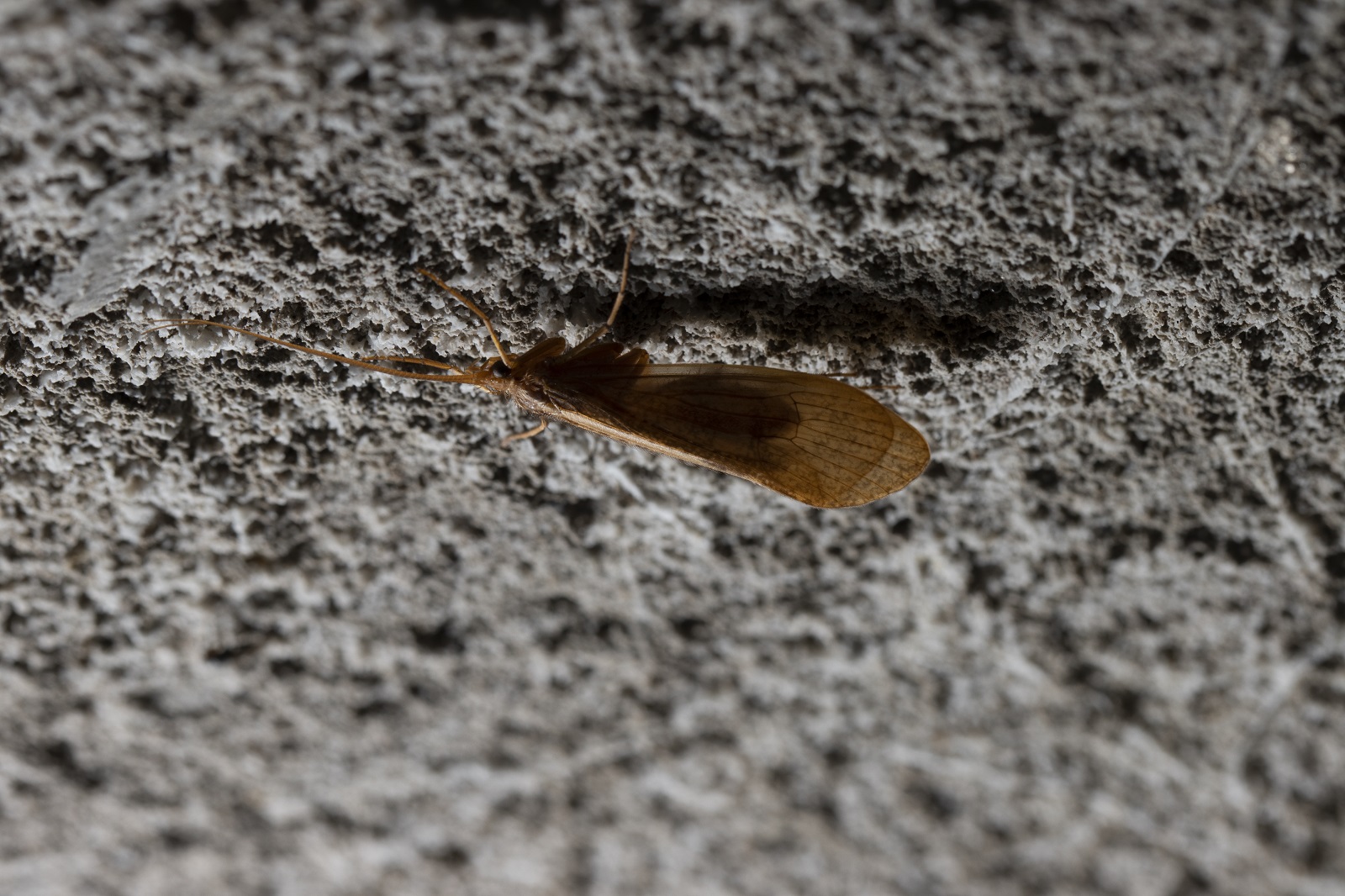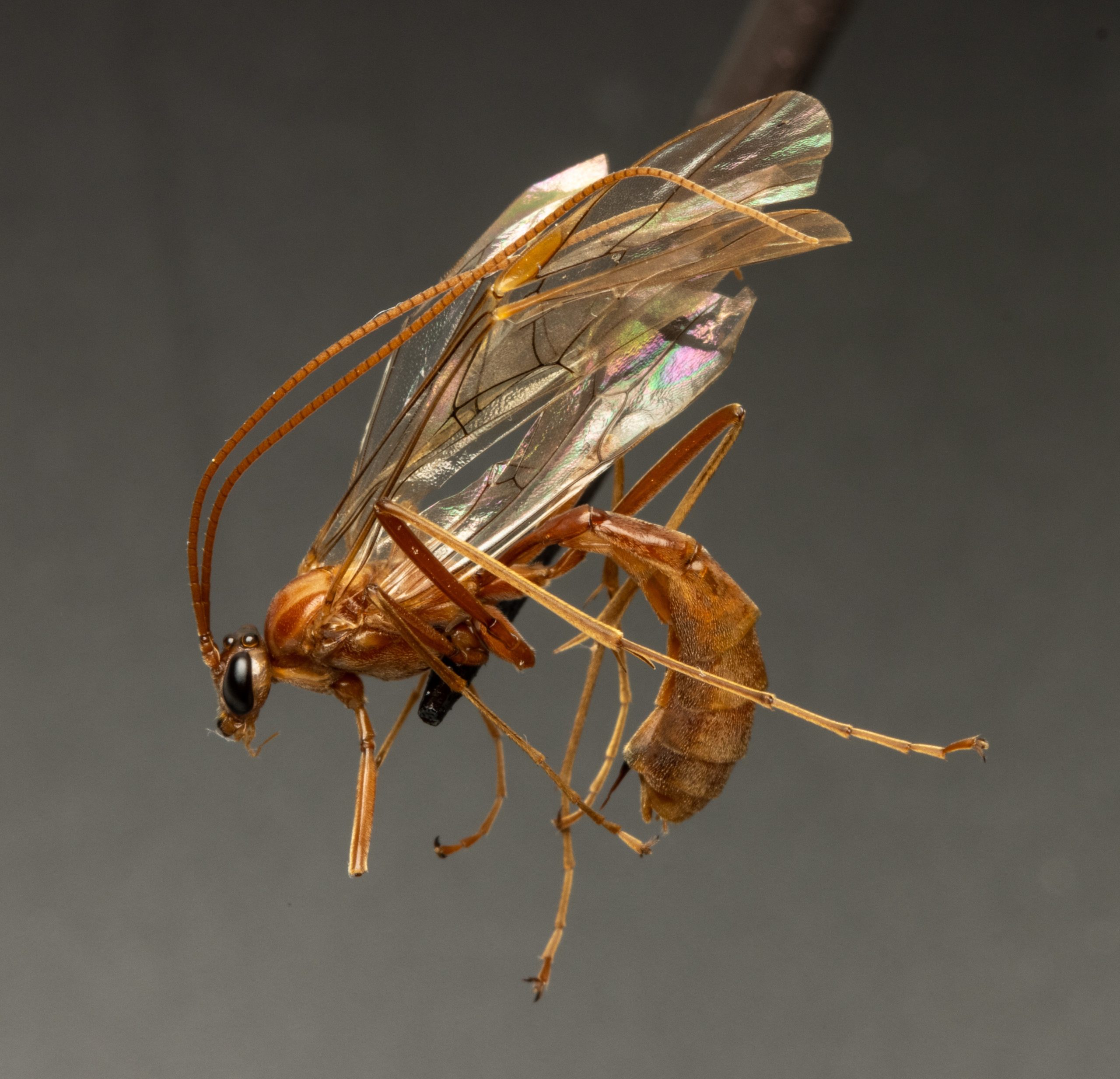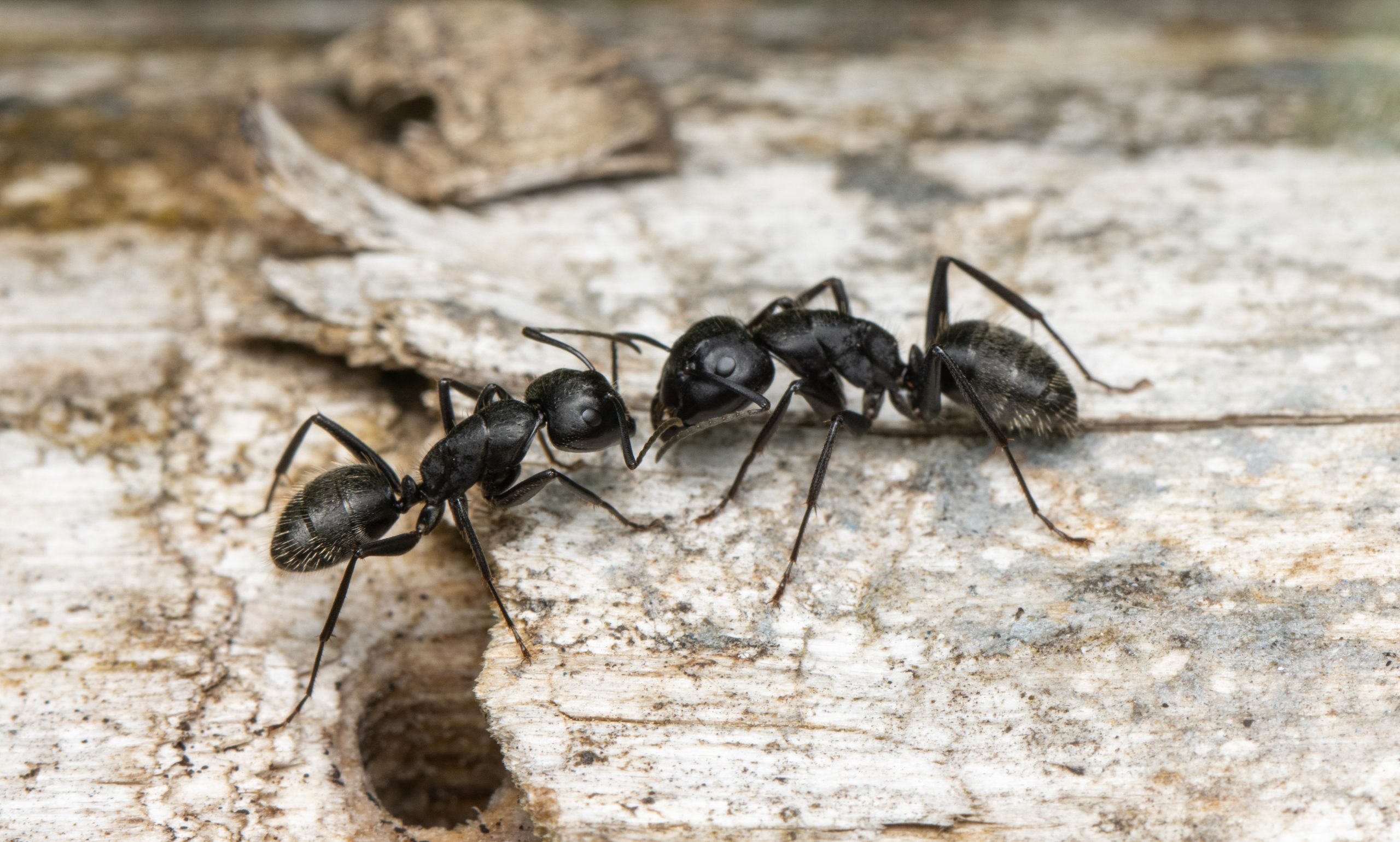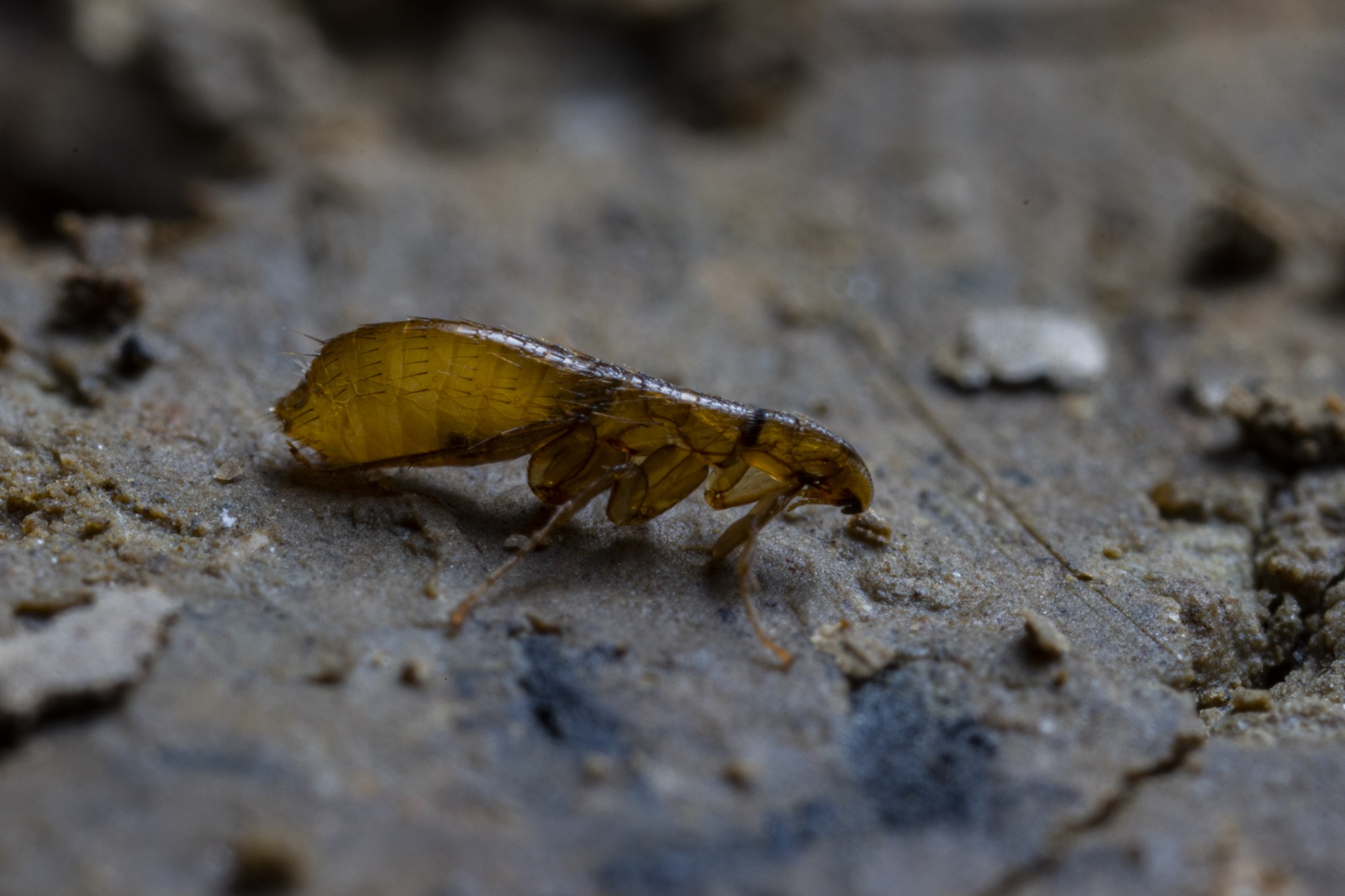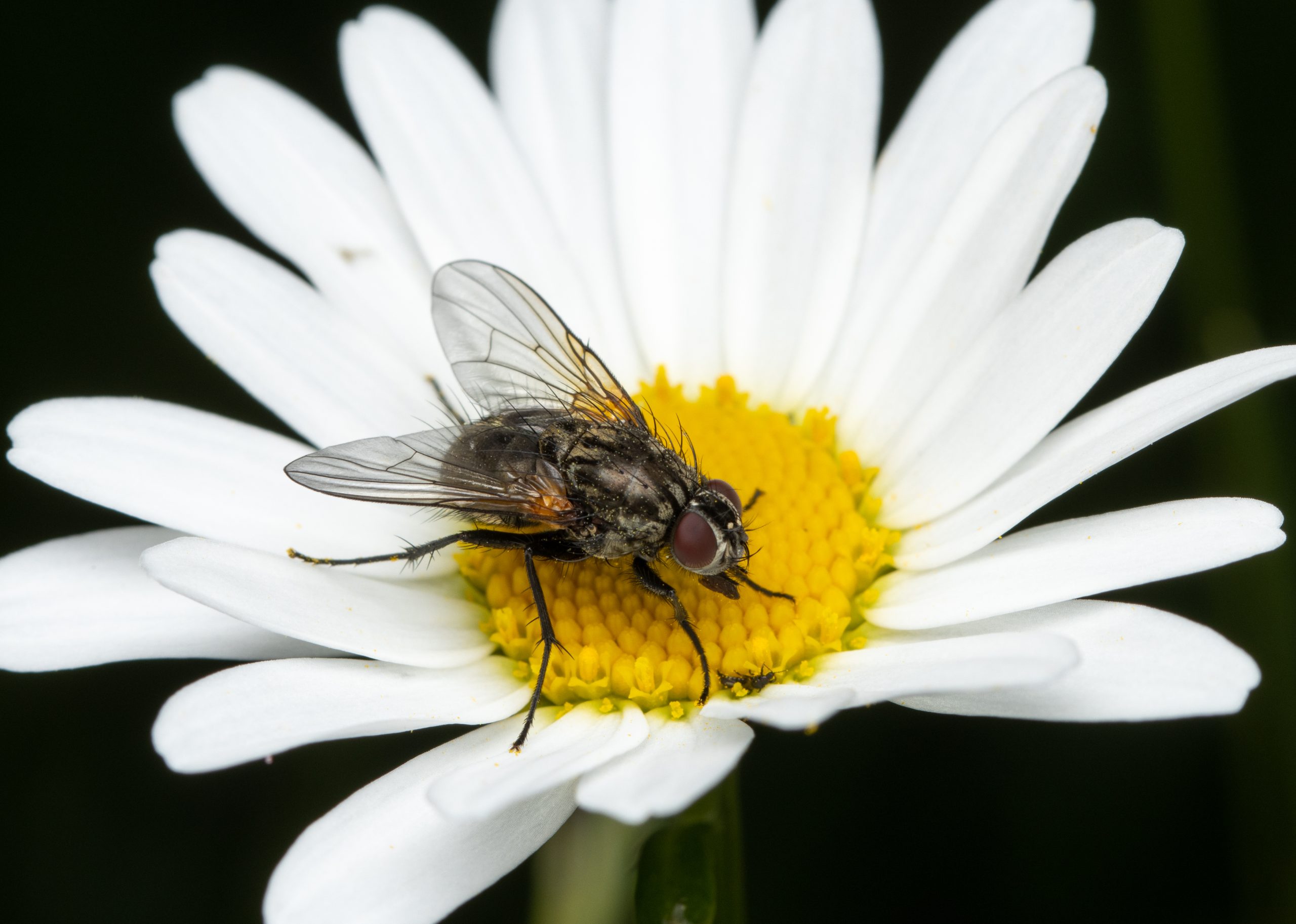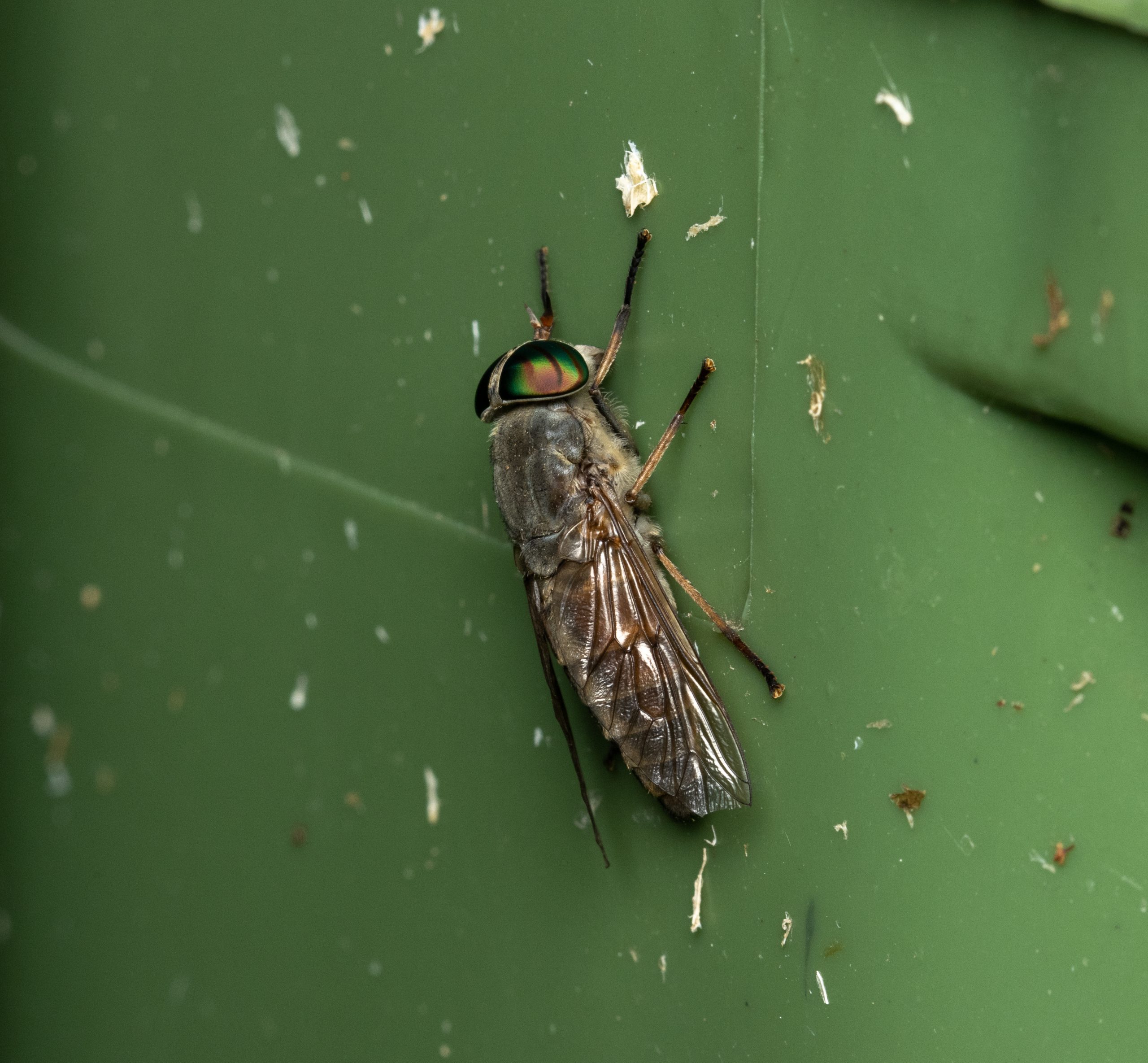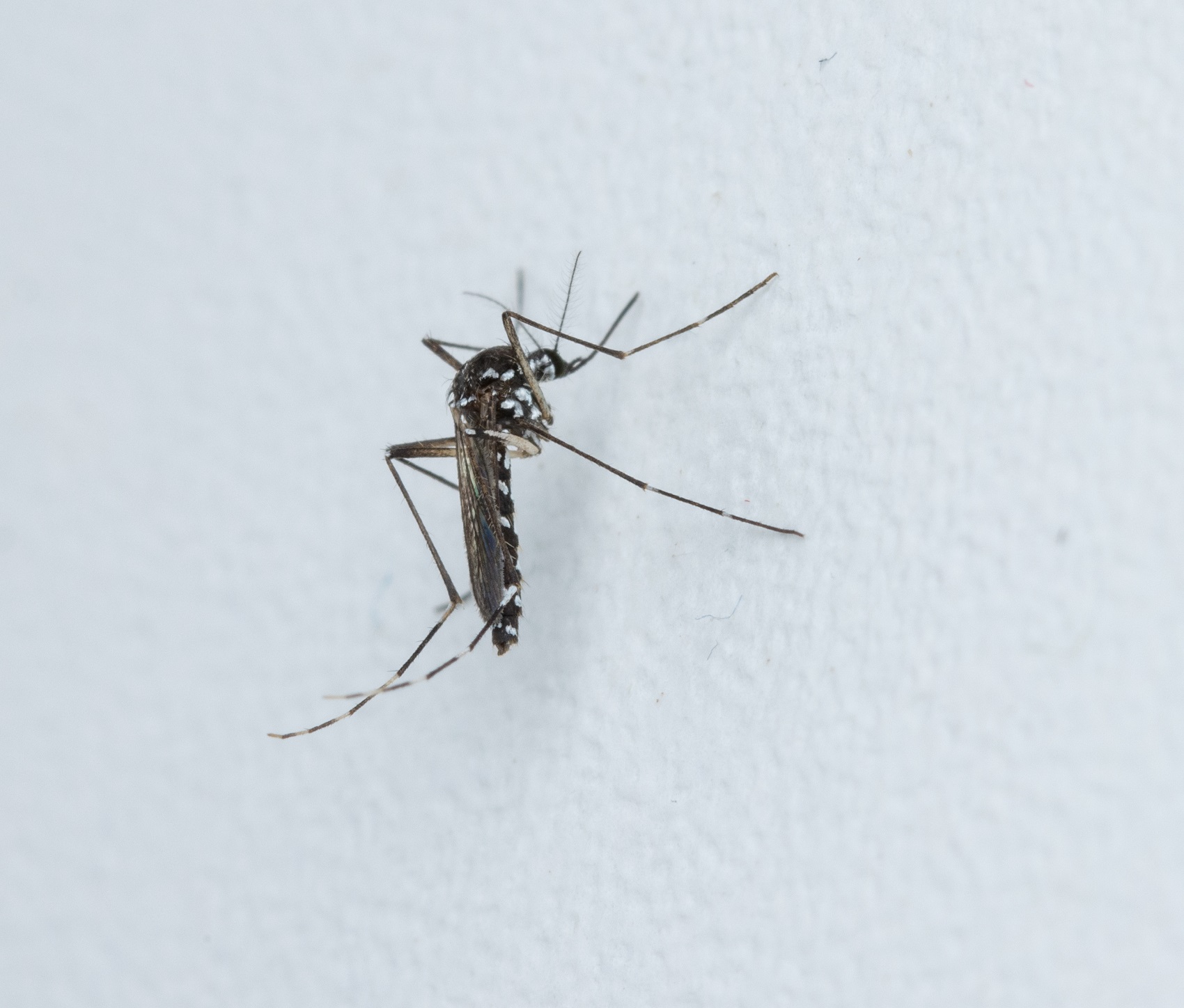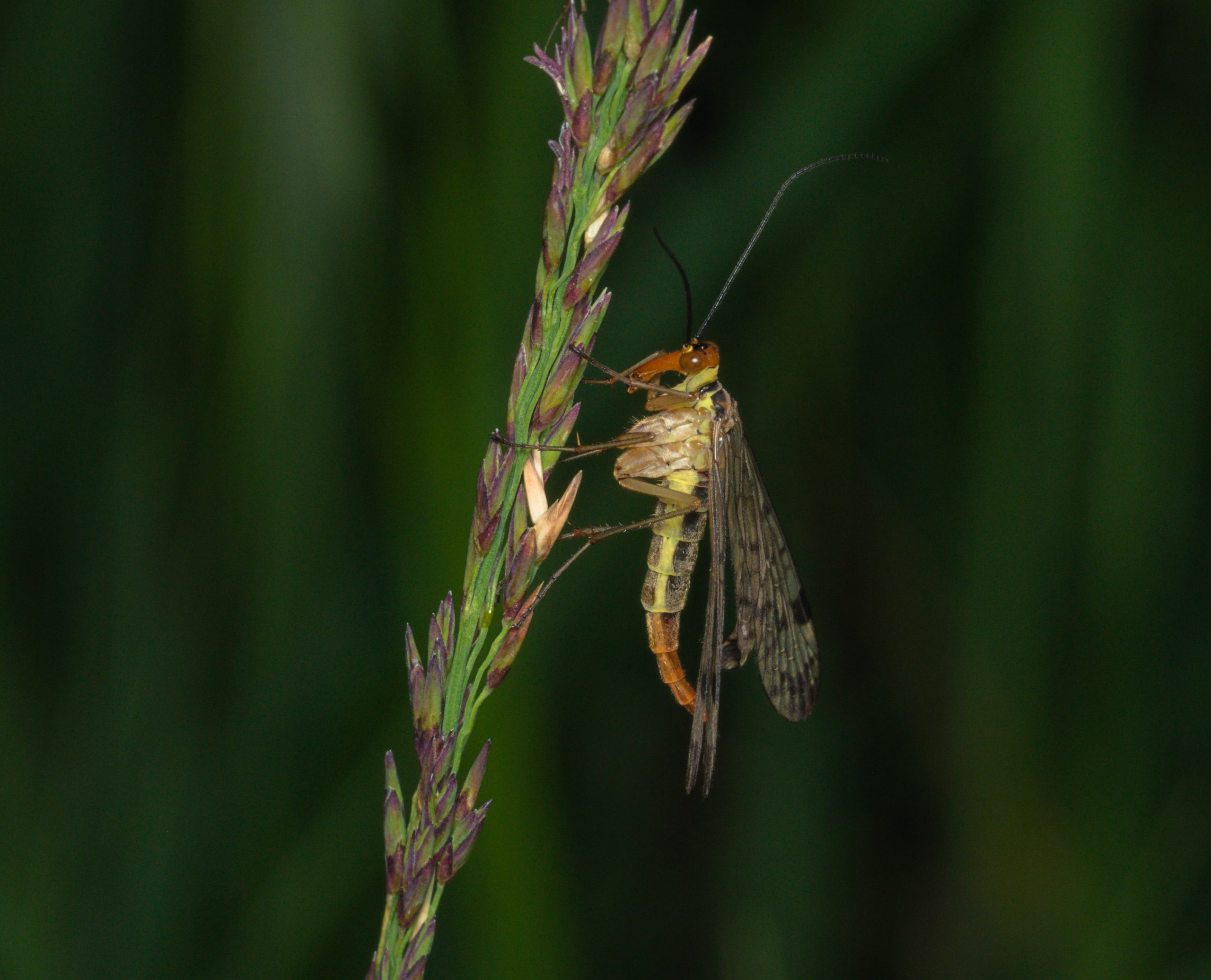- Insects
Trichoptera
Caddisflies are an order of insects with adults measuring from one to four centimeters in length. They usually have a brown-gray coloration, rarely with brown, black or yellow markings on their wings. The body consists of a head, thorax and abdomen.
The head bears long threadlike antennae, large compound eyes, simple ocelli and mouthparts that are reduced in size. The mouthparts comprise weak mandibles, maxillae I with large palps and fused maxillae II which form a labium with a bit smaller palps.
The thorax consists of three segments. A pair of segmented legs originate at the ventral side of each thoracic segment. The second and third pair of legs are considerably longer than the first one. On the second thoracic segment (mesothorax) and the third thoracic segment (metatoraks) are two pairs of wings which are held tent-wise at rest. The wings are sparsely veined and hairy.
The abdomen is without appendages and covered by wings.
Caddisflies are distributed worldwide. The adult caddisflies are terrestrial but are often present in the vicinity of various water bodies. They are weak fliers, and the females of certain species are wingless. They are primarily nocturnal and rest on the waterside vegetation during the day. Their reduced mouthparts allow them to consume only liquid food.
The female caddisflies lay their eggs into the water. Different species have different habitat preferences ranging from still to flowing water habitats. The larvae are aquatic with a distinct head, three pairs of thoracic legs, tracheal gills on the abdomen and characteristic grappling hooks at the end of the abdomen. Larvae of different caddisfly species exhibit very different lifestyles. Larve of some species build cases made of salivary gland secretions reinforced with grains of sand and detritus. Inside such a case are often one or two air bubbles which increase the buoyancy of the case and thus improve its mobility. Larvae of some species use the salivary glands secretions to make nets that serve as food traps. Larve of some species are free living predators. Mature larva pupates and undergoes a complete metamorphosis. After the metamorphosis pupal caddisflies swim to the surface, molt and emerge as fully formed winged adults. Most of the species present in Slovenia live for about a year, as adult for only about a month. The larvae are an important part of benthic communities in inland waters and represent important bioindicators.
More photos
Related arthropods

Authors
- Urban Bogataj,
- Gregor Bračko,
- Teo Delič,
- Cene Fišer,
- Žiga Fišer,
- Rok Kostanjšek,
- Rudi Verovnik,
- Miloš Vittori,
- Valerija Zakšek.
Students Vito Ham, Vesna Jurjevič, Gaj Kušar, and Adrijan Samuel Stell Pičman also participated in the project.

